These Low FODMAP Tropical Coconut Oatmeal Cookies are quick and easy to make and combine brown sugar, butter, fiber-rich oats, coconut, dried papaya, lime zest, orange juice and dried pineapple. They are sweet, fruity, chewy, easy to make, and a nice addition to your low FODMAP cookie repertoire.
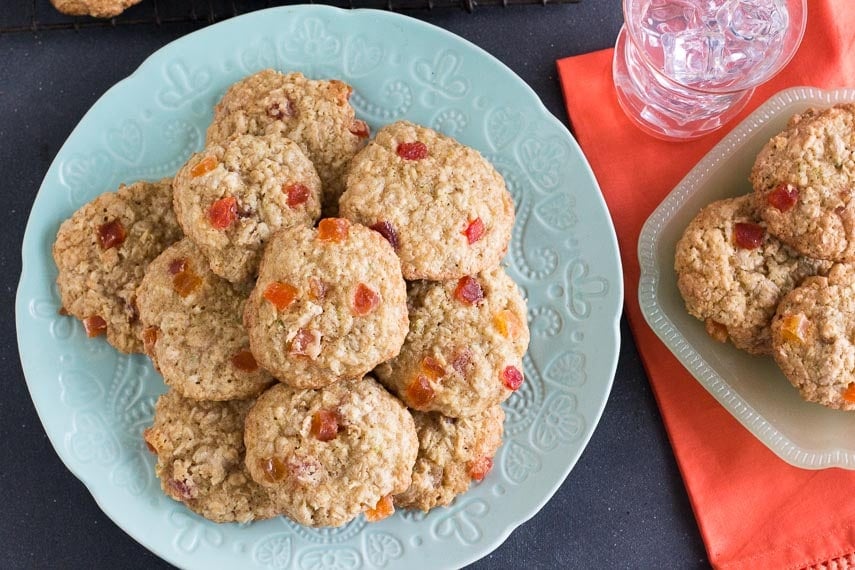
Let’s Talk About Pineapple & FODMAPs
Both Monash University and FODMAP Friendly have lab tested fresh pineapple. Monash sets the low FODMAP serving at 1 cup chopped (140 g). FODMAP Friendly gives it a “Pass” at 1 cup (150 g). Monash has also lab tested dried pineapple but no low FODMAP amount was initially reported. Thankfully there was an app update Summer 2024 and dried pineapple has a low FODMAP serving of 20 g.
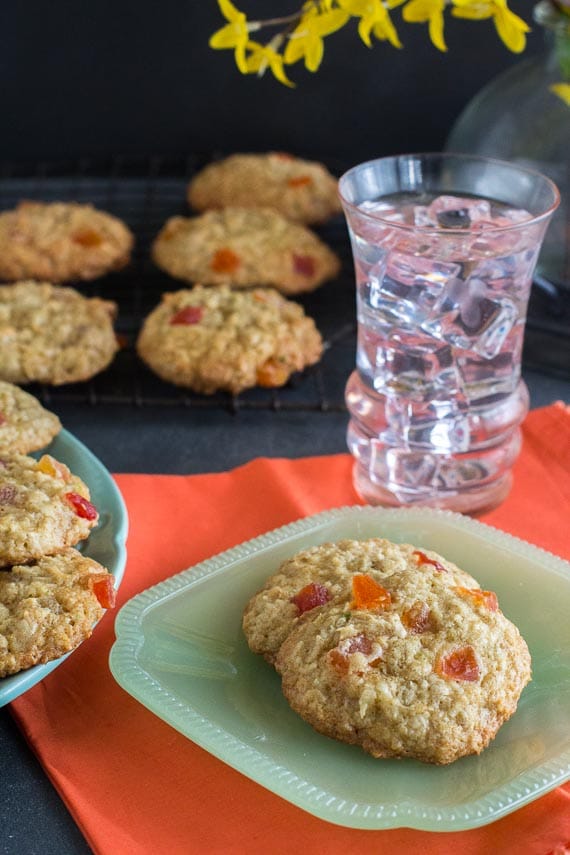
Are you ready for tropical chewy deliciousness?
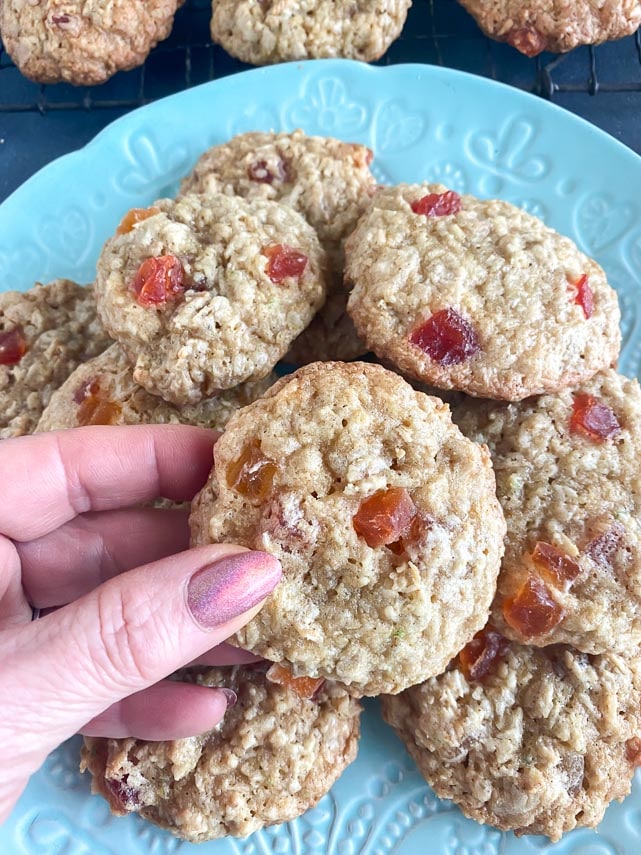
Coconut & FODMAPs
We bet you want to know all about coconut and we have addressed it in all its guises in our article, Is Coconut Low FODMAP?
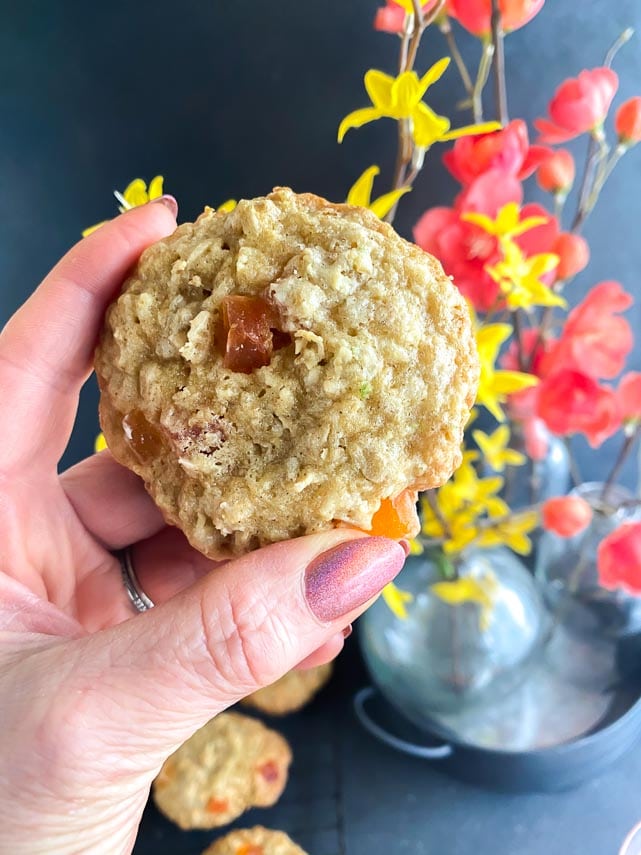
The answer depends on whether you are looking at canned coconut milk, lite canned coconut milk, coconut water or coconut flour. Coconut sugar, sweetened dried coconut, unsweetened dried coconut – we have info on ALL of these coconut products (and more) in that article.
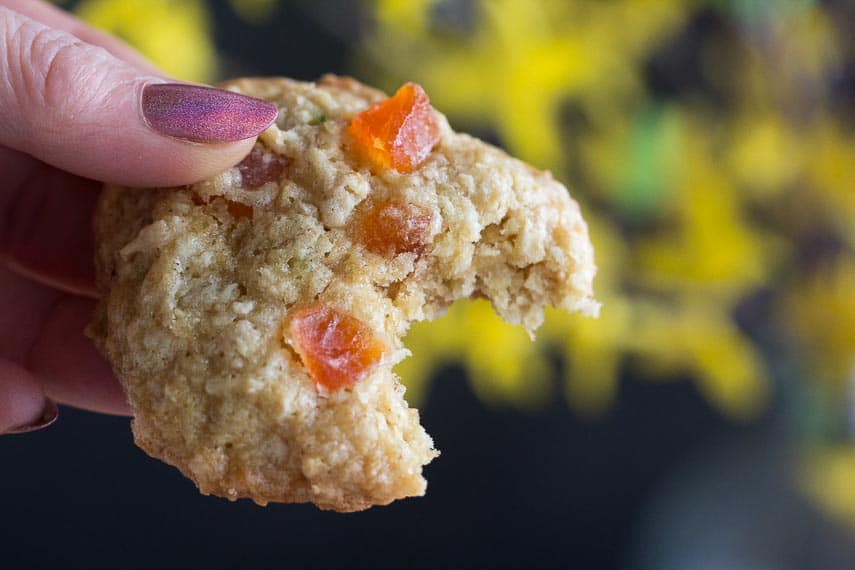
Buy Unsweetened Dried Coconut
What I want to call your attention to now, for this Low FODMAP Tropical Coconut Oatmeal Cookie recipe is unsweetened dried coconut, also referred to as desiccated coconut. It is unsweetened (which should be obvious) and it has a very fine texture – much more so than other types of dried coconut. These two aspects together mean that other types of dried coconut do not make good substitutions for flavor or textural reasons.
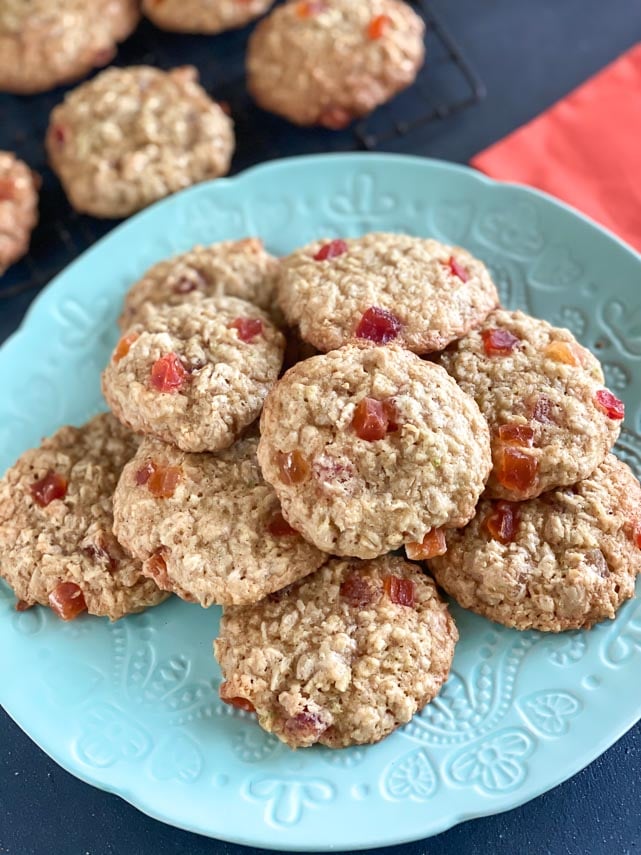
How To Make Low FODMAP Tropical Coconut Oatmeal Cookies
Place oats in a mixing bowl, sprinkle orange juice over and set aside.
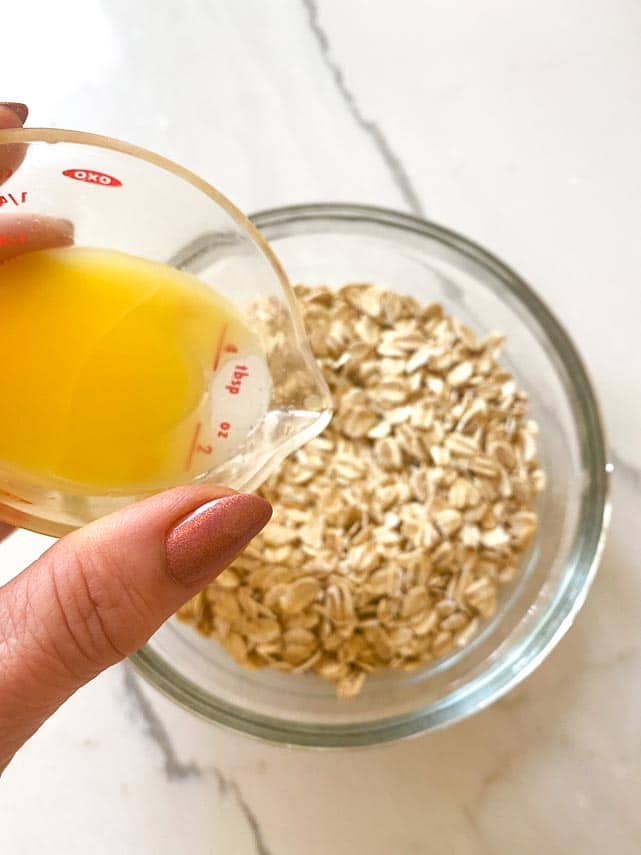
Whisk together the flour, baking soda and salt to aerate and combine; set aside.
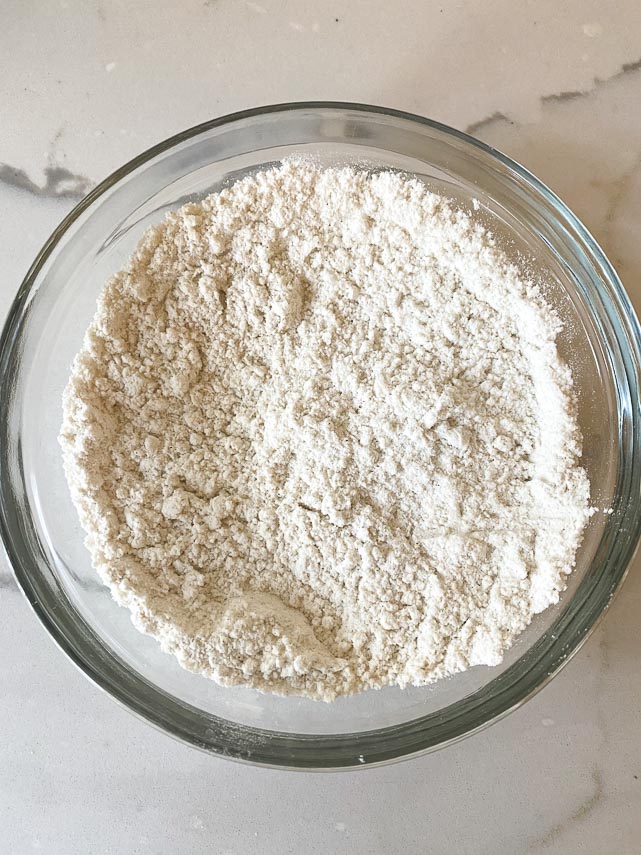
Melt the butter in a large bowl in the microwave or melt in a saucepan. Whisk in both sugars, lime zest, vanilla and cinnamon until the combined.
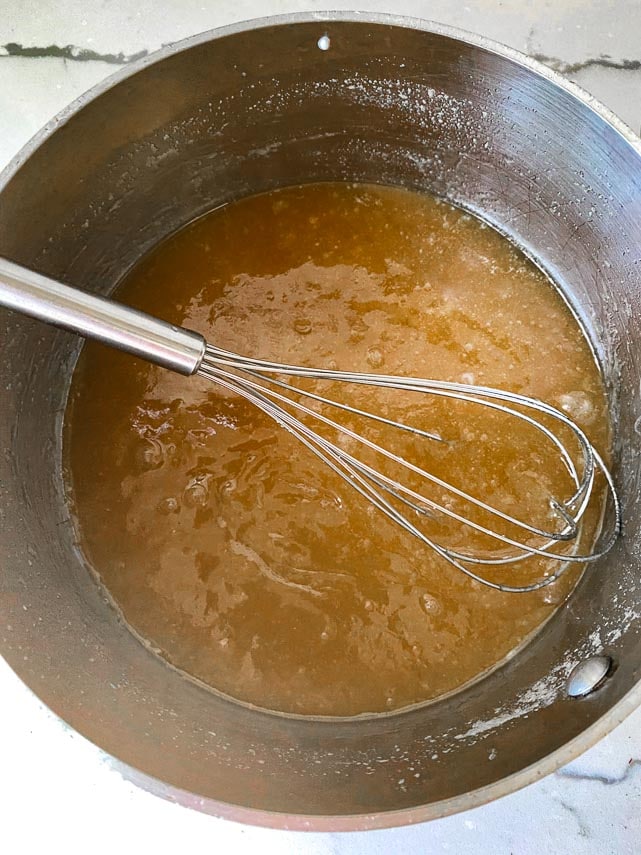
I like using a Microplane zester for creating the lime zest. (The pic was taken late in the game, because I wanted to show you the zester. Follow the recipe and whisk it into the butter/sugar mixture prior to eggs or the the oats and flour).
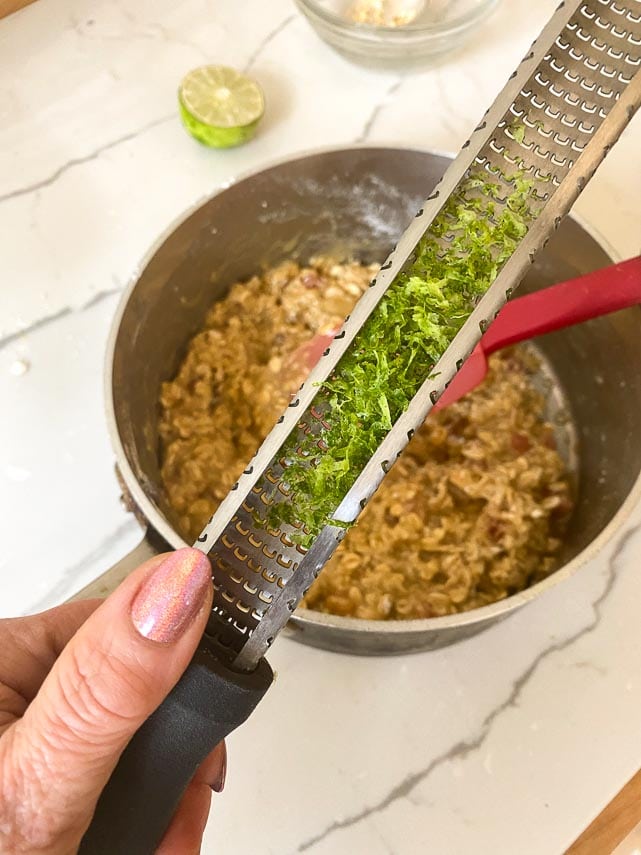
Whisk in the egg and egg yolk until everything is well mixed.
Add the flour mixture, the oats, diced papaya, diced pineapple, and the coconut…
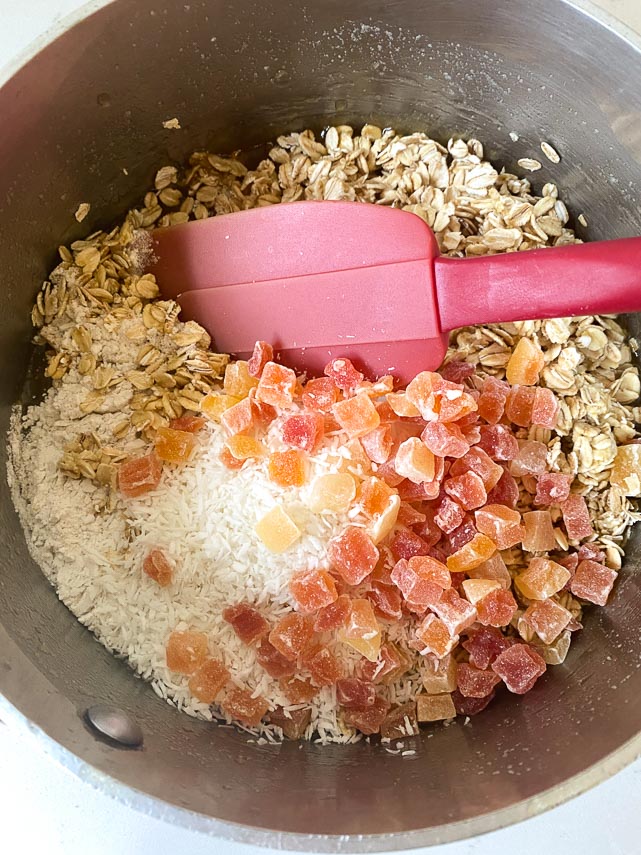
…mixing until well combined. The batter will look like this:
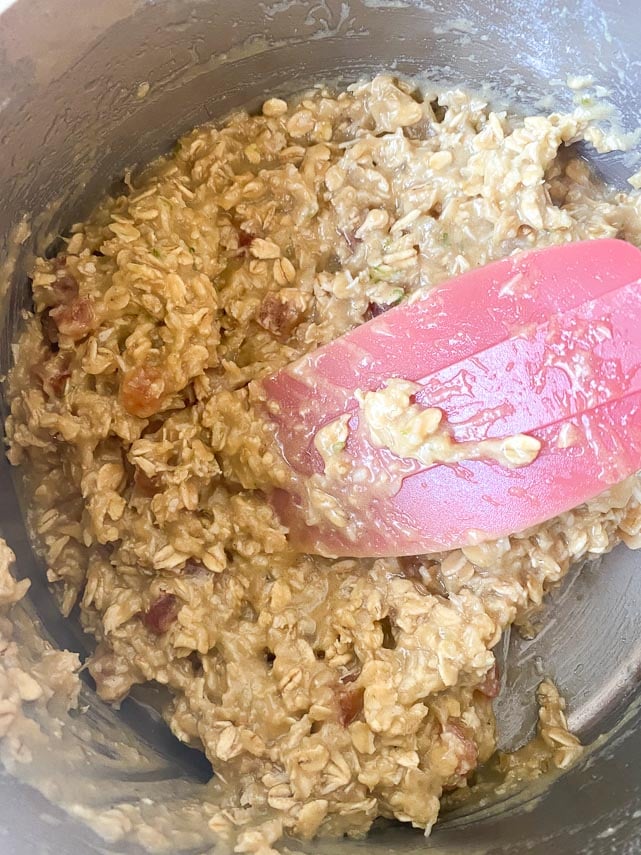
Cover bowl with plastic wrap and refrigerate for at least 2 hours. (You can refrigerate overnight if you like and this is my preference).
Position racks in upper and lower third of oven. Preheat to 350°F (180°C). Line two half-sheet pans with parchment paper. Scoop cookie dough into 2-tablespoon size balls – I like to use our #2040 Zeroll scoop – and space them evenly apart on the prepared pans.
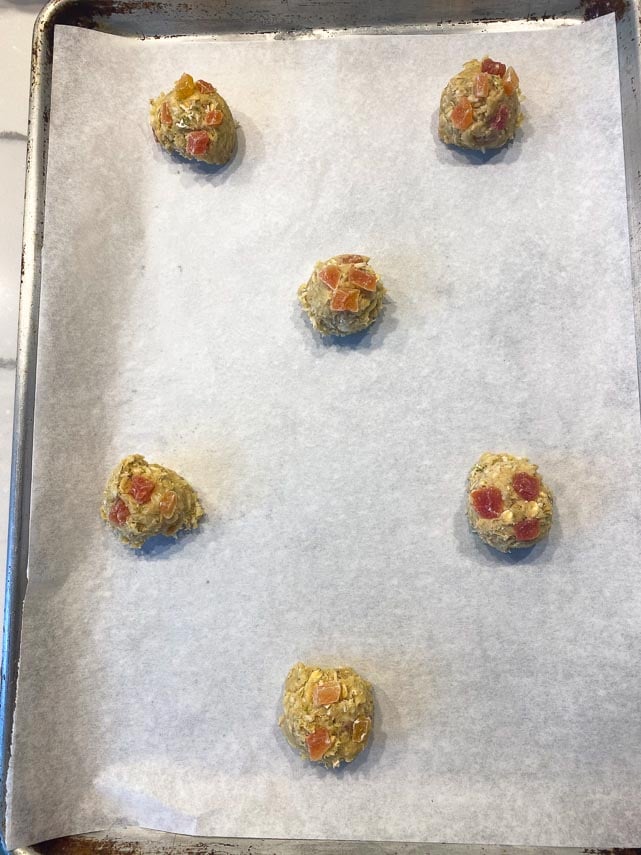
Bake cookies, rotating pans top to bottom and front to back halfway through, until edges are golden brown, but centers are still a bit soft, 12 to 15 minutes. Cool pans and cookies on racks. Repeat with remaining dough.
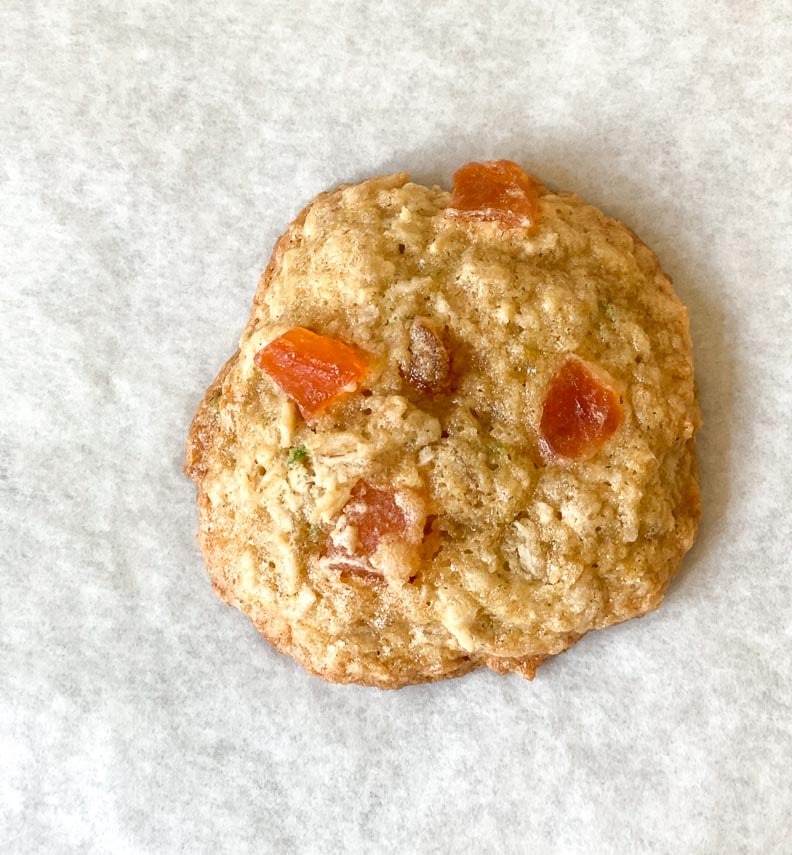
Cookies are tantalizing slightly warm and once cooled can be stored at room temperature in an airtight container for up to 3 days.
My bull terrier,. Rose, “helps” me do all the cooking. She wants you to see this awesome plate of cookies that she helped make.
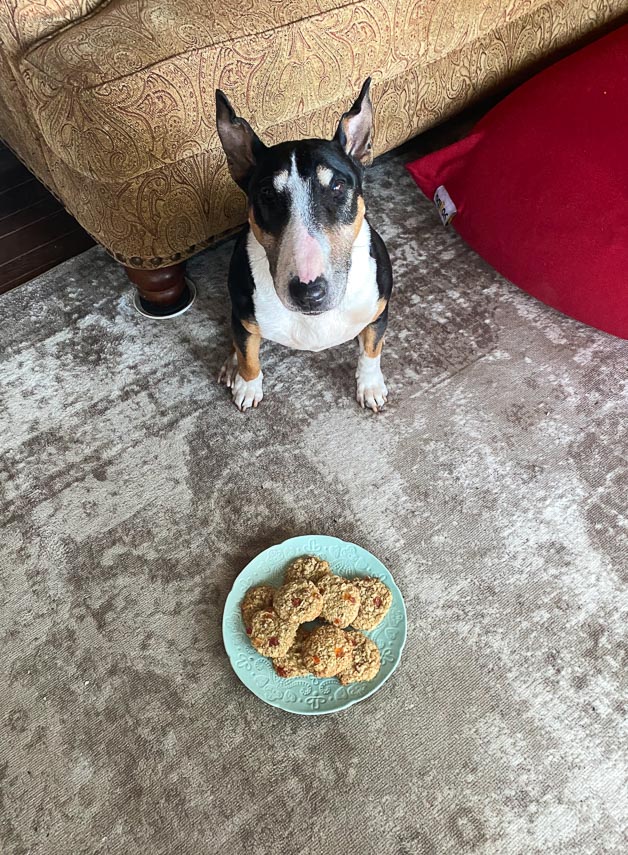
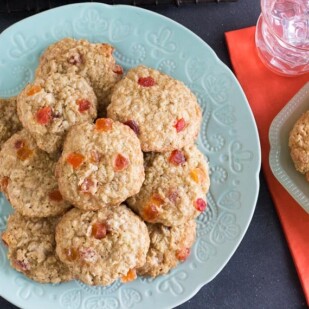
Low FODMAP Tropical Coconut Oatmeal Cookies
These Low FODMAP Tropical Coconut Oatmeal Cookies are quick and easy to make and combine brown sugar, butter, fiber-rich oats, coconut, dried papaya, lime zest, orange juice and dried pineapple. They are sweet, fruity, chewy, easy to make, and a nice addition to your low FODMAP cookie repertoire.
Low FODMAP Serving Size Info: makes 18 cookies; 18 servings; 1 cookie per serving
Ingredients:
- 1 cup (99 g) old-fashioned rolled oats
- 2 tablespoons orange juice
- 2/3 cup (96 g) low FODMAP gluten-free all-purpose flour, such as Bob Red Mill’s 1 to 1 Gluten Free Baking Flour
- ¼ teaspoon baking soda
- ¼ teaspoon salt
- ½ cup (113 g; 1 stick) unsalted butter, cut into pieces
- 1/3 cup (65 g) sugar
- ¼ cup (54 g) firmly packed light brown sugar
- 2 teaspoons fine lime zest, made with a rasp-style zester
- 1 teaspoon vanilla extract
- ½ teaspoon cinnamon
- 1 large egg, at room temperature
- 1 large egg yolk, at room temperature
- ½ cup (85 g) diced dried papaya
- ½ cup (85 g) diced dried pineapple
- 1/3 cup (29 g) unsweetened dried shredded coconut
Preparation:
-
Place oats in a mixing bowl, sprinkle orange juice over and set aside.
-
Whisk together the flour, baking soda and salt to aerate and combine; set aside.
-
Melt the butter in a large bowl in the microwave or melt in a saucepan.
-
Whisk in both sugars, lime zest, vanilla and cinnamon until the combined, then whisk in the egg and egg yolk until everything is well mixed.
-
Add the flour mixture, the oats, diced papaya, diced pineapple, and the coconut mixing until well combined. Cover bowl with plastic wrap and refrigerate for at least 2 hours. (You can refrigerate overnight if you like and this is my preference).
-
Position racks in upper and lower third of oven. Preheat to 350°F (180°C). Line two half-sheet pans with parchment paper. Scoop cookie dough into 2-tablespoon size balls – I like to use our #2040 Zeroll scoop – and space them evenly apart on the prepared pans.
-
Bake cookies, rotating pans top to bottom and front to back halfway through, until edges are golden brown, but centers are still a bit soft, 12 to 15 minutes. Cool pans and cookies on racks. Repeat with remaining dough.
-
Cookies are tantalizing slightly warm and once cooled can be stored at room temperature in an airtight container for up to 3 days.
Notes:
FODMAP Information
Our recipes are based on Monash University and FODMAP Friendly science.
Butter: Both Monash University and FODMAP Friendly have lab tested butter. Monash states that a low FODMAP Green Light portion is 1 tablespoon or 19 g and also states that “butter is high in fat and does not contain carbohydrates (FODMAPs)”. FODMAP Friendly gives it a “Pass” at 1 tablespoon or 19 g. Both recommended serving sizes are presented as part of healthy eating guidelines, not as maximum FODMAP serving size. Fat can affect guy motility and trigger IBS symptoms in some people. Eat to your tolerance.
Dried Coconut: Dried coconut has been lab tested by both FODMAP Friendly and Monash University. Monash states has established that the low FODMAP amount is ½ cup (30 g).
Dried Pineapple: Dried pineapple has been lab tested by Monash University and has a moderate FODMAP serving size of 25 g; the FODMAP is fructans. In an update, Monash determined a low FODMAP servings to be 20 g, and they upped the Moderate to 26 g.
Papaya: Monash University has lab tested ripe papaya and it contains no FODMAPs. Dried papaya (paw paw) is low FODMAP in 5 g servings.
Sugar: Monash University and FODMAP Friendly have both lab tested white, granulated sugar. Monash states that a Green Light low FODMAP serving size of white sugar is ¼ cup (50 g). FODMAP Friendly simply states that they have tested 1 tablespoon and that it is low FODMAP. Regular granulated white sugar is sucrose, which is a disaccharide made up of equal parts glucose and fructose. Sucrose is broken down and absorbed efficiently in the small intestine.
Please always refer to the Monash University & FODMAP Friendly smartphone apps for the most up-to-date lab tested information. As always, your tolerance is what counts; please eat accordingly. The ultimate goal of the low FODMAP diet is to eat as broadly as possible, without triggering symptoms, for the healthiest microbiome.
Nutrition
All nutritional information is based on third-party calculations and should be considered estimates. Actual nutritional content will vary with brands used, measuring methods, portion sizes and more. For a more detailed explanation, please read our article Understanding The Nutrition Panel Within Our Recipes.
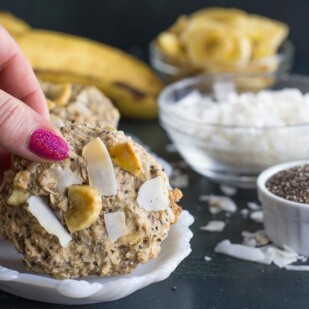
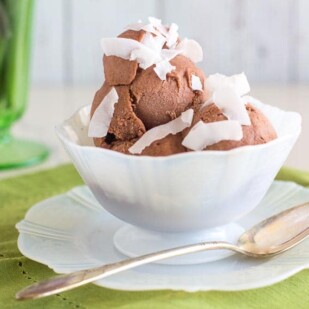



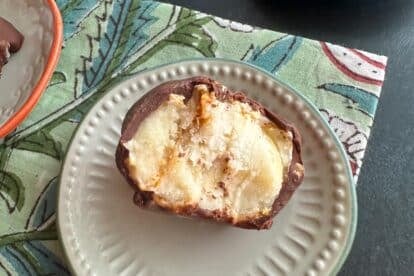

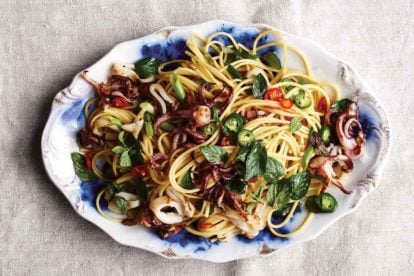
Rose is a total cutie and what a helper she is just guarding that plate full of deliciousness!
Yes, but her dish “washing” in not exactly sanitary:) Still, best helper ever.